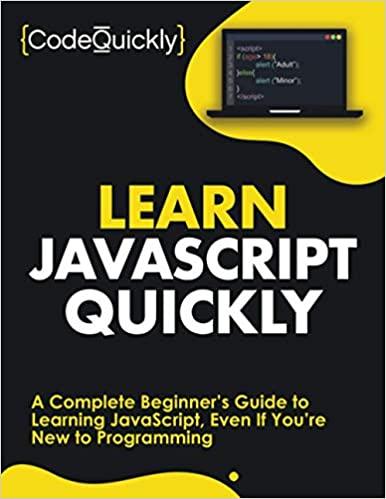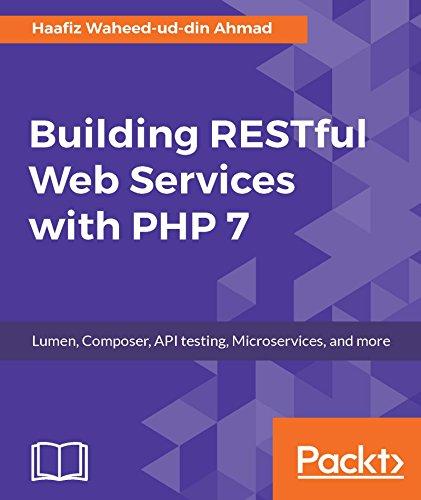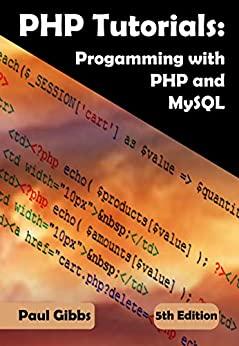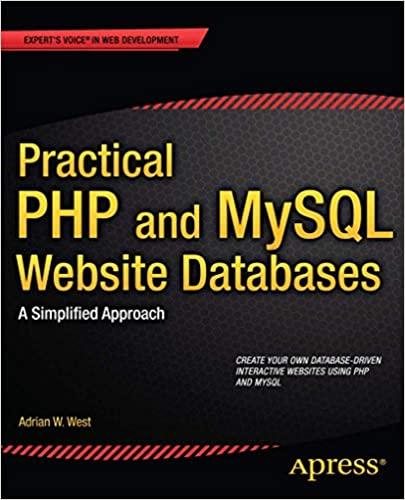React Firebase storage Upload and save url to firestore
Read More
Upload Multiple Images And Store In Database Using PHP And MySQL.
Read More
Books
Learn JavaScript Quickly: A Complete Beginner’s Guide to Learning JavaScript, Even If You’re New to Programming (Crash Course With Hands-On Project)
Become a Master Coder and Cash In the Big Bucks: JavaScript Programming Made Easy.
Do you want to develop a skill that will ensure you never go jobless again?
Have you always wanted to learn how to program but could never afford those ridiculously expensive courses?
Developers and programmers are amongst the highest paid professions in the world, and according to the US Bureau of Labor Statistics, the number of jobs for software and app developers will increase by a shocking 24% in the next few years.
In 2019, the tech industry posted 4.6 million job openings in the US job market, and their direct economic output was estimated at 1.9 trillion dollars.
There’s no doubt that the IT industry is the future, and software, web, and app developers are and will be the most coveted professionals for many years to come.
But here’s the shock you may not have seen coming: the IT industry has a backdoor–you only need to know how to open it in order to jump straight on that cash wagon.
The key to that door is JavaScript, a programming language that has withstood the test of time and has become one of the most used languages.
You might have heard about some of the companies that use JavaScript: Netflix, Google, Microsoft, eBay, Facebook, Uber, PayPal… The list goes on and on.
Being proficient in JavaScript will basically ensure that you never run out of job options.
As with pursuing any new concept, learning how to program can be intimidating, especially for beginners. Even though JavaScript is incredibly beginner-friendly, it’s still complex enough for you to need a guide to lead you through the process of mastering it.
In Learn JavaScript Quickly, you will discover:
A full beginner’s guide on programming, including the simplest, most basic things all newbies should know before getting started with JavaScript
Step-by-step mentorship through JavaScript’s crucial concepts, rules, and functions
2 bonus guides on HTML and CSS to ensure that you’re fully equipped with all the essentials for achievement in a highly competitive job market
The best techniques and tools to supplement your JavaScript knowledge, allowing for frustration-free learning
Simple explanations for all programming tasks, such as creating Array elements and handling HTML events, so that comprehension won’t be an issue
Helpful programming exercises and tasks (solutions included) to challenge yourself and fully master JavaScript
How to create complex websites in record time, simply by following the straightforward instructions provided inside
And much more.
Don’t let the fact that you’ve never programmed before stop you from having a highly profitable career–JavaScript is the simplest programming language anyone can learn.
We all start somewhere, but you first need to make sure you start out on the right foot and equip yourself with the best tools of the trade.
Modular Programming with PHP 7
About This Book
This book demonstrates code reusability and distributed development to get high speed, maintainable, and fast applications
It illustrates the development of a complete modular application developed using PHP7 in detail
This book provides a high-level overview of the Symfony framework, a set of tools and a development methodology that are needed to build a modular web shop application
Who This Book Is For
This step-by-step guide is divided into two sections. The first section explores all the fundamentals of modular design technique with respect to PHP 7. The latter section demonstrates the practical development of individual modules of a web shop application.
What You Will Learn
Discover the new features of PHP 7 that are relevant to modular application development
Write manageable code based on the GoF design patterns and SOLID principles
Define the application requirements of a working modular application
Explore the ins and outs of the Symfony framework
Build a set of modules based on the Symfony framework that comprise a simple web shop app
Use core modules to set the structure and dependencies for other modules to use
Set up entities that are relevant to the module functionality and see how to manage these entities
In Detail
Modular design techniques help you build readable, manageable, reusable, and more efficient codes. PHP 7, which is a popular open source scripting language, is used to build modular functions for your software. With this book, you will gain a deep insight into the modular programming paradigm and how to achieve modularity in your PHP code.
We start with a brief introduction to the new features of PHP 7, some of which open a door to new concepts used in modular development. With design patterns being at the heart of all modular PHP code, you will learn about the GoF design patterns and how to apply them. You will see how to write code that is easy to maintain and extend over time with the help of the SOLID design principles.
Throughout the rest of the book, you will build different working modules of a modern web shop application using the Symfony framework, which will give you a deep understanding of modular application development using PHP 7.
Style and approach
This book is for intermediate-level PHP developers with little to no knowledge of modular programming who want to understand design patterns and principles in order to better utilize the existing frameworks for modular application development.
Building RESTful Web Services with PHP 7: Lumen, Composer, API testing, Microservices, and more
Key Features
Leverage the Lumen framework to build RESTful API endpoints for your applications
Understand how to increase efficiency and security of your web service.
Learn to apply the concepts by implementing the examples covered in the book
Book Description
REST is the most wide spread and effective standard to develop APIs for internet services. With the way PHP and its eco-system has modernized the way code is written by simplifying various operations, it is useful to develop RESTful APIs with PHP 7 and modern tools.
This book explains in detail how to create your own RESTful API in PHP 7 that can be consumed by other users in your organization.
Starting with a brief introduction to the fundamentals of REST architecture and the new features in PHP 7, you will learn to implement basic RESTful API endpoints using vanilla PHP. The book explains how to identify flaws in security and design and teach you how to tackle them. You will learn about composer, Lumen framework and how to make your RESTful API cleaner, secure and efficient. The book emphasizes on automated tests, teaches about different testing types and give a brief introduction to microservices which is the natural way forward.
After reading this book, you will have a clear understanding of the REST architecture and you can build a web service from scratch.
What you will learn
Understand the REST API architecture and its benefits
Write RESTful API web services in PHP 7
Address security-elated issues in a REST API
Leverage the importance of automated testing and write tests for API endpoints
Identify security flaws in our current API endpoints and tackle them effectively
Observe the working of Lumen microframeworks and write RESTful web services in it
About the Author
Haafiz Waheed-ud-din Ahmad has been working in the IT industry since 2008. He has mostly worked in web application development and mostly used PHP at the server side. Although most of his experience is in PHP, he is a technology agnostic person and also likes to learn and adapt to new technologies. He also acts as an adviser for startups and new developers.
He has worked on Python and JavaScript as well. He likes to experiment with new technologies, and he has also explored Golang, Scala, and Neo4J. He also has a keen interest in data science and big data domain and has worked on D3.js for data visualization. He is not just a technology enthusiast but also likes to solve day-to-day problems by the usage of technology. You can follow him on twitter at @Haafiz786.
Table of Contents
REST Architecture and RESTful Web Services
Important Features In PHP 7
Creating RESTful API endpoints in Vanilla PHP
Identify Security and Design Flaws
Load and resolve with Composer, an Evolutionary
Illuminating RESTful Web Services with Lumen
Improving RESTful web services
API Testing – Guards on the Gates
Micro-services
PHP Tutorials: Programming with PHP and MySQL: Learn PHP 7 / 8 with MySQL databases for web Programming
Price : $6.11 Book Purchase link :https://www.amazon.com/PHP-Tutorials-Programming-MySQL-ebook/dp/B00CBLZ1U0 Written from a series of college lectures on PHP and MySQL this book is a practical look at programming. It starts with an introduction to PHP and then goes on...
Practical PHP and MySQL Website Databases: A Simplified Approach (Expert’s Voice in Web Development)
Practical PHP and MySQL Website Databases is a project-oriented book that demystifies building interactive, database-driven websites. The focus is on getting you up and running as quickly as possible. In the first two chapters you will set up your development and testing environment, and then build your first PHP and MySQL database-driven website. You will then increase its sophistication, security, and functionality throughout the course of the book. The PHP required is taught in context within each project so you can quickly learn how PHP integrates with MySQL to create powerful database-driven websites.
Each project is fully illustrated, so you will see clearly what you are building as you create your own database-driven website. You will build a form for registering users, and then build an interface so that an administrator can view and administer the user database. You will create a message board for users and a method for emailing them. You will also learn the best practices for ensuring that your website databases are secure. Later chapters describe how to create a blog, a product catalog, and a simple e-commerce site. You will also discover how to migrate a database to a remote host. Because you are building the interactive pages yourself, you will know exactly how the MySQL and PHP work, and you will be able to add database interactivity to your own websites with ease.
What you’ll learn
Download and use a free development and test platform.
Create interactive database-driven websites.
Learn how to make website databases secure.
Create sophisticated projects, such as blogs and e-commerce sites.
Create user friendly and secure interfaces.
Migrate a site to a remote host.
Who this book is for
Practical PHP and MySQL Website Databases is for web developers who wish to begin designing database-driven websites. The book is an excellent choice for people who have HTML and CSS skills but would also like to learn MySQL and PHP. For readers who have little or no knowledge of PHP, the book will teach enough PHP to complete all the projects in the book. Web developers who are ready to move beyond the basics or who have not kept up-to-date with their MySQL and PHP knowledge will also benefit from Practical PHP and MySQL Website Databases. College and university I.T. teachers will find that Practical PHP and MySQL Website Databases is an excellent set text, the projects would form a basis for students to adapt for their course work.
Table of Contents
Create and Test a MySQL Database and Table
Create Web Pages that Interact with Users
Setting Up Logins for Your Website Users
Creating an Administration Interface
Expanding and Enriching your Website
Security and Validation
Migrating to a Host and Backing Up Your Website Database
Creating a Product Catalog
Adding Multiple Tables and Other Enhancements
Creating a Message Board
E-commerce: A Brief Introduction
Troubleshooting Your Database-Driven Website
Appendix A: Resources
PHP: 3 in 1- Essential Beginners Guide+ Tips and tricks+ Advanced Guide to Learn the Realms of PHP Programming
PHP is one of the most important server-side web programming languages, and in combination with the database system MySQL and the database language SQL, an easy to learn, but also very powerful programming language to create dynamic websites.
With this book, you will learn how to create your own dynamic websites with PHP, starting with the basics using many practical examples. Makes a perfect gift idea for a computer scientist or programmer who is just starting to learn programming language.
This book can help propel you into the professional level in the field of the creation of dynamic websites by the language of PHP programming. In this first part, for beginners, you will discover:
The world of web development, the basics of the PHP programming language, the solid bases that will accompany you throughout your life PHP, the processing of information from users and some notions on the network, and much more!
Perfect for beginners.
Learn to program dynamic websites with PHP and SQL!
Get started now!
This book covers all the important topics you need to learn in PHP, including plenty of practical code examples to show you how everything works together. We cover all the major concepts and explain them in a no-nonsense, easy-to-learn manner.
Here’s what you will learn:
What PHP is and how to install it
Real-world examples
PHP constants, operators and variables
PHP Expressions, operators and statements, including the if, else, and if-else statements
PHP looping, including the while, for and do-while loops
Break and continue statements
PHP functions, including arguments and default values
PHP arrays, including looping through arrays and multi-dimensional arrays
PHP Superglobals
Object-oriented programming concepts
Classes, abstract classes, objects, inheritance and multiple inheritance
PHP and SQL database commands
And much more
Throughout the book, you will find examples, carefully chosen to show you how each concept works, along with the code output.
Don’t wait any longer; click Buy Now button and start reading the only advanced PHP book you will ever need.






